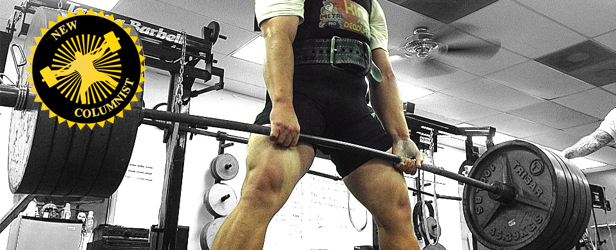
One Size Does Not Fit All, Pt. 1:
Programming and Qualification in Powerlifting
A common error that many people make is thinking that they can copy and paste any training program to fit their needs. They will often try to use whatever program the strongest lifter on the internet or at their gym follows and utilize advanced training modalities...only to find that the results aren’t very good. Conversely, a lifter that is more advanced may not be adapting his programming to suit his current state. This is problematic because he is not doing enough or adjusting accordingly in order to continue to progress. This article will take a look at some considerations that you can make in order to adjust your program to fit your current level.
Figuring out where you stand
In order to accurately discuss this, one must first look at levels of performance and determine what equates to certain qualifications. I am going to use the designations that are seen in R. A. Roman’s The Training of The Weightlifter. There have been adaptations made to this for powerlifting, but I am going to make some comparisons since it will vary depending on how and where you choose to compete. Basically, the chart goes from Class III, Class II, Class I, CMS (Candidate for Mastery of Sport), MS (Master of Sport), MSIC (Master of Sport International Class), and WR (World Record). If you are under Class III, you would be considered a novice with little training at all. If you are III, II, or I, you are qualified/rated. This range would probably be equivalent to something like a guy that has done a handful of meets and knows how to do the basics of the sport to someone that is a fairly good state-level competitor. (These would still be lifters that are not totaling Elite for their weight class). CMS would be someone who has totaled Elite and could go to a national-level meet and hold his/her own. MS would be someone who is the best in his national meet, and MSIC would be someone who is competitive on an international level. Finally, WR doesn't necessarily mean the lifter holds a “world record” in one of the 40+ American federations with no international affiliation, but rather these would be lifters that are the best lifters in their respective weight classes. Nowadays, a WR lifter would more likely be the equivalent of whoever is hitting the biggest totals in his respective genre and competing at the biggest meets. These would be those meets with the deepest competition, whether it is raw, single, or multi-ply gear.
How your qualification should affect your training
Based on what Roman found in his studies, the following considerations should be taken into account depending on your level:
- Volume should continually increase on the competitive exercise as your qualification rises.
- Volume of high intensity work (70% or above) should increase as the qualification rises. Lifters in the highest categories can have a greater amount of volume falling in the 80-89% and 90+% ranges, with a decrease in the amount they perform in the 70-79% range.
- Novices and lower rated lifters (Class III and II) should practice technical mastery on the competitive exercises at low intensities.
- General exercises are of more importance to the novice and lower rated lifters (Class III and II)—they help provide a base and strengthen weak areas that may be negatively affecting technique.
- Lifters in the Class I, CMS, and MS will not gain much in performance from high volumes of general exercises. At this point, the range of specialized exercises is broadened and volume is increased while generalized exercises are decreased.
- Once a lifter reaches MSIC or WR level, he/she should decrease the loading of the specialized exercises because too much volume of SPP will reduce the ability to recover. However, GPP is now used as active recovery.
Take a good look at yourself
After considering the above, it is important to make sure that a realistic rating of one's self is used when determining your level. If you have only been lifting weights for a few months and have just learned how to squat, bench, and deadlift correctly, don’t think that you need to use bands, chains, specialty bars, and other specialized modalities. If anything, this will only retard your progress. Conversely, if you are in the second group of lifters, don’t think that hammering tons of general accessory work at high volumes will have much of an effect on your total. Similarly, advanced lifters will slow their recovery if they perform too much volume on general or specialized exercises, taking away from the mastery of their sport skill.
It is important to accurately view where a lifter is at any point of his long-term development. All sports require some basis of multi-year planning if you want to actually excel at them. If you are looking to merely participate, feel free to just wing it. However, by using an analytical approach and appropriately planning your training, you will give yourself a greater chance of success.
Writing this article has made me look back and realize that the past few articles I have written are not to be interpreted as something to cut and paste into anyone’s training. I think some may have been misled by my last article, thinking that I was implying that everyone should abandon general work. In truth, the article was about what I personally changed in my own training. And, sure enough, since that article I have changed a few things again. This proves the point and importance of adapting your training to fit your specific qualification.
References:
Roman, R. A. (1988) The Training of the Weightlifter. Sportivny Press: Livonia, Michigan.









